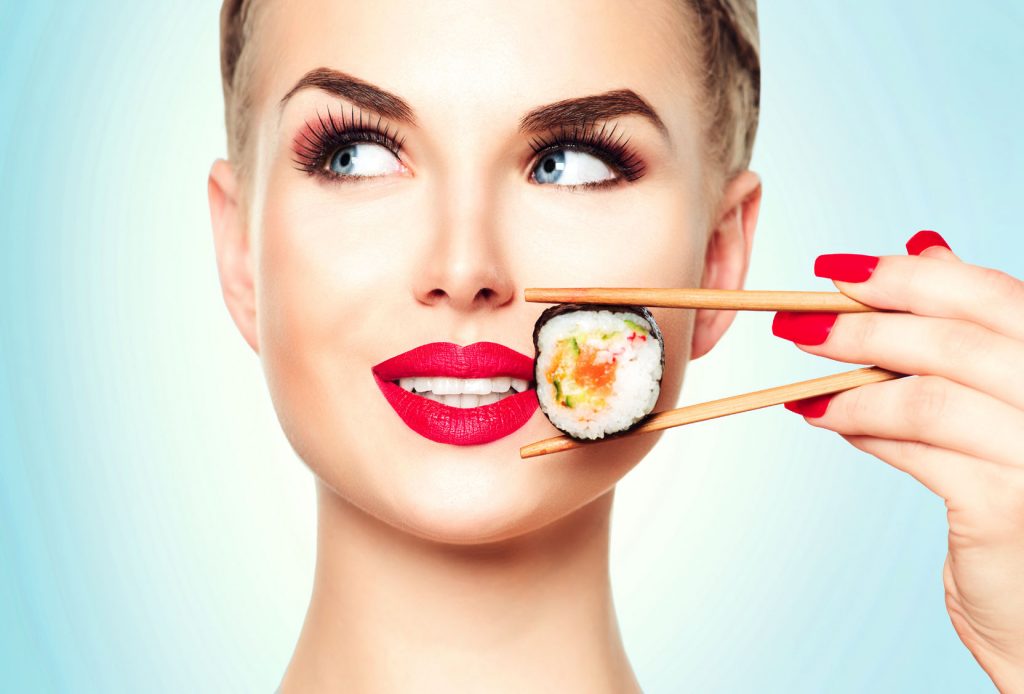
A few decades back, when disco reigned over the club scene in America, and John Travolta was still a young man, sushi and sashimi were novel things. Americans — and most Westerners in general — didn’t know a lot about this food, and wondered if it was even a good idea to eat raw fish in the first place. Now sushi is practically everywhere, and has become synonymous with Japanese culture and cuisine. While really good sushi does indeed make for some delectable dining, we thought we’d give you a peek at a few other Japanese dishes you may not have heard much about that are delicious too — but are definitely not sushi.
Okonomiyaki
Okonomiyaki has been called ‘Japanese pizza,’ as well as the ‘Japanese omelet,’ or a Japanese made-to-order pancake. While it does share a few traits with all of these non-Japanese dishes, okonomiyaki has characteristics that are its own as well. In essence, this griddle-cooked food (famous in the city of Osaka) consists of batter and cabbage, plus a variety of mixed-in ingredients (usually veggies, meat or seafood) like octopus, pork and shrimp, plus savory okonomiyaki sauce, mayonnaise, yams, and eggs. The result is something wonderful. Okonomiyaki has been making some inroads in Western societies recently, so if the opportunity does arise, please dig in and give it a try.
Basashi
In some way, Basashi is the Japanese version of the Italian favorite Carpaccio. The difference here is that instead of beef, the thinly sliced red meat (raw) in question is actually horse. It’s not a super-common item, but when indulged in, it’s generally served as cold horsemeat sashimi, paired with garlic, ginger, soy sauce, or rice. If you do partake, just try to keep from imagining all of those fun horse rides you went on when you were a kid — or perhaps still enjoy to this day.
Yuba
Yuba is a cousin of traditional tofu. Made from the skin (or film) of boiled soybean milk, these chewy and relatively flavorless chuncks of soybean goodness are great for picking up the zests of the dishes and condiments they’re combined with. Since they have a bit of a cheesy texture, you can fry them and eat them with a little wasabi, add them to different kinds of soups — or do pretty much whatever you’d like with them, culinarily-speaking, of course.
Onigiri
While some people might confuse onigiri with sushi, these savory little rice balls are not the same, although they do make for a tasty treat for anyone looking for something akin to sushi, but also a little bit different. Onigiri rice balls are made, cleverly enough, from white rice. They’re generally wrapped with nori seaweed, and filled with beef, chicken, pork, salmon, or tuna mayonnaise. They’re the perfect bite-sized snacks, which can be picked up when you’re on the go (assuming an onigiri shop is nearby), or made to munch on later, possibly by putting a few inside your lunchbox.
Tonkatsu
Tonkatsu is delicious — but clearly not for vegetarians (unlike yuba). This deep-fried breaded Japanese pork cutlet, often served with finely-chopped cabbage, spicy mustard, and Tonkatsu sauce (made from prunes, vegetables, spices, sugar, and soy sauce) is fairly simple to prepare, but that simplicity doesn’t take away for its overall taste. Interestingly enough, Tonkatsu is considered a Western-style dish in Japan, as deep-frying meat and then breading it with eggs, flour, and breadcrumbs didn’t really exist in the archipelago nation before Western culinary influences arrived. But no matter the origins, many Japanese people truly delight in these breaded pork cutlets, and if you get the chance to try them, you probably will, too.















-300x169.jpg)









